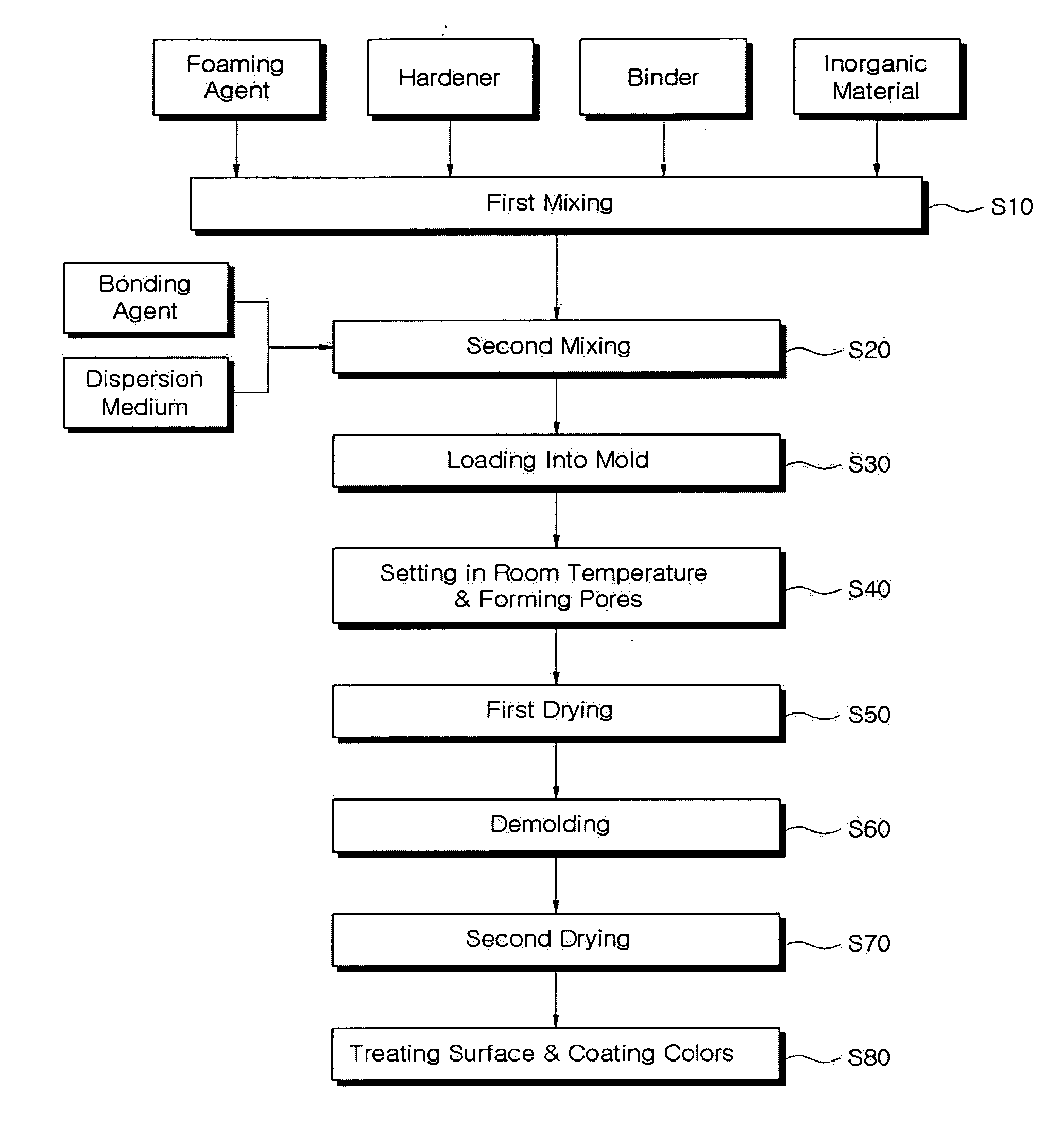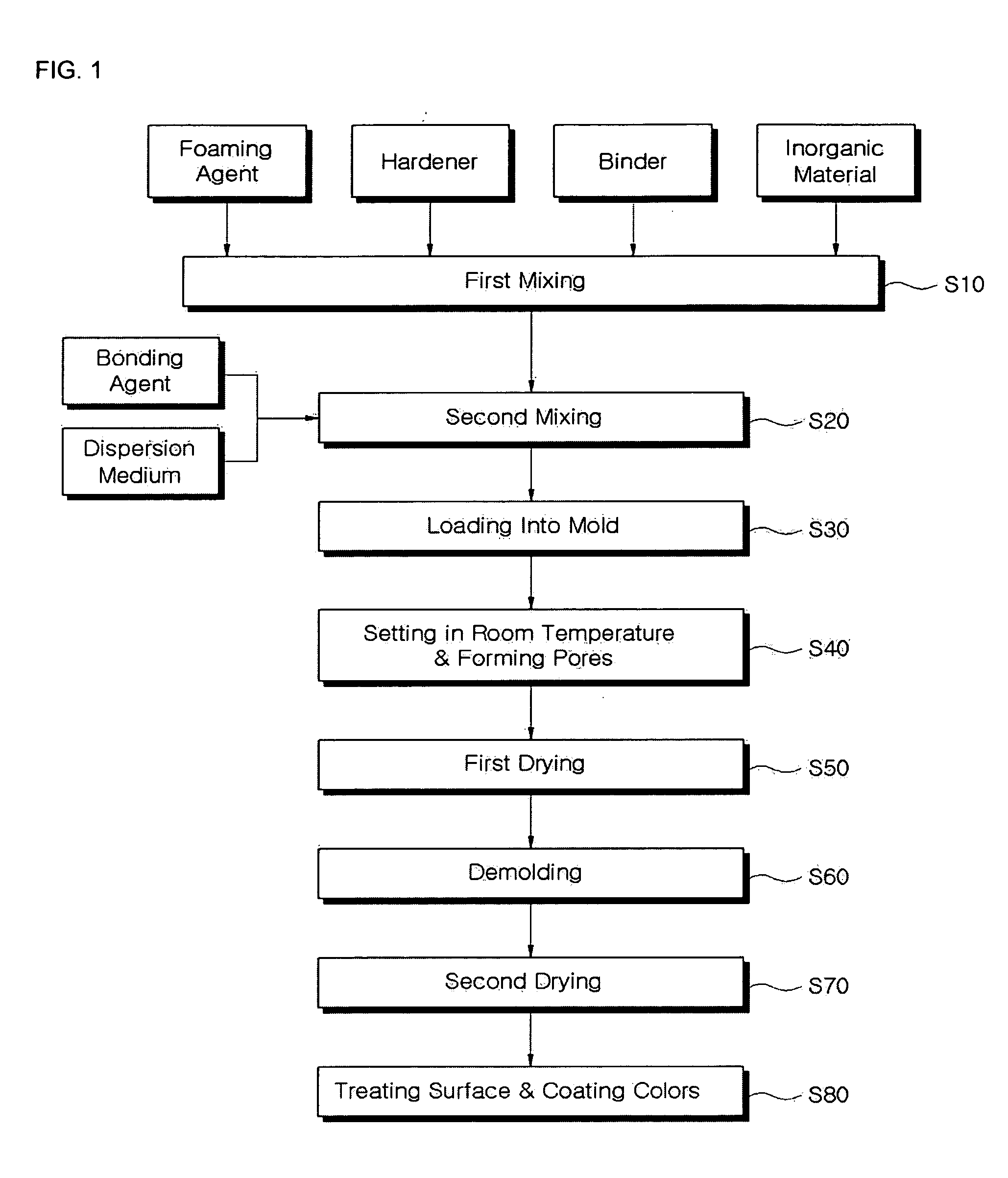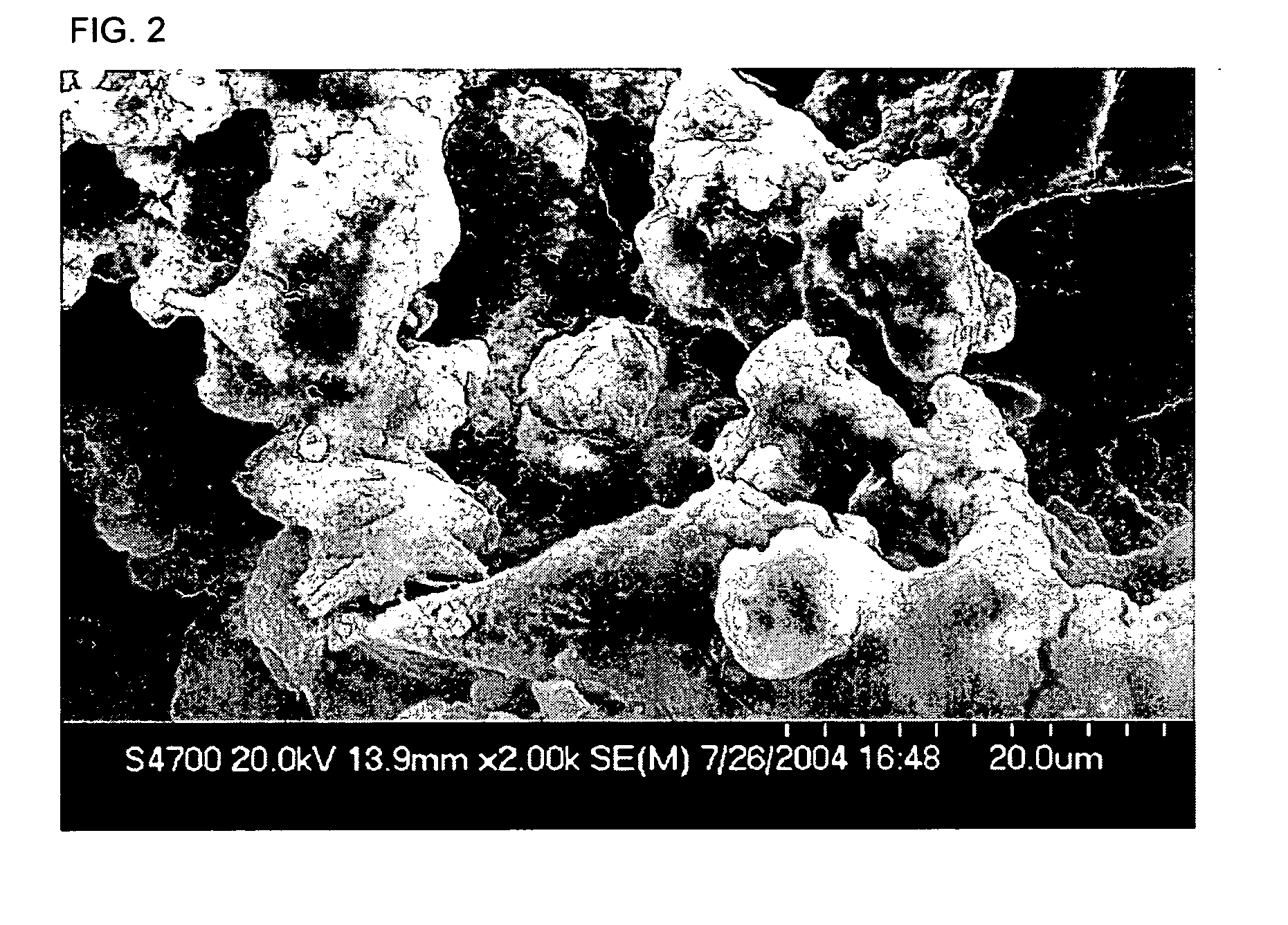Porous ceramic heating element and method of manufacturing thereof
a heating element and porous ceramic technology, applied in the direction of heater elements, resistive material coatings, natural mineral layered products, etc., can solve the problems of element generation of poisonous gas, reduced heat storage ability, and general weak mechanical strength of the structure of the porous ceramic heating element, so as to accelerate the formation of foam and prevent the discharge
- Summary
- Abstract
- Description
- Claims
- Application Information
AI Technical Summary
Benefits of technology
Problems solved by technology
Method used
Image
Examples
Embodiment Construction
[0032] The present invention provides a porous ceramic heating element wherein 0.08 to 1.00 wt % of a foaming agent is added in 99.00 to 99.92 wt % of a mixture of an inorganic material, a binder, a conductive material, a hardener, a bonding agent and a dispersion medium and mixed with the mixture.
[0033] Herein, the bonding agent and the hardener have a tetrahedron structure by a condensation polymerization reaction, and the tetrahedron structure forms silica gel by cross-linking with metal or fixing of metal.
[0034] Assuming that the mixture is 100wt %, the inorganic material is a nonflammable material forming 40 to 66 wt % of the mixture and a packing material for the frame of a final molded product. Herein, the inorganic material may be selected one composition or mixture by mixing at least two selected compositions among industrial by-products such as steel slag and blast-furnace slag, metal oxide systems such as alumina (Al2O3) and mullite (3Al2O3·2SiO2), metal carbide systems...
PUM
| Property | Measurement | Unit |
|---|---|---|
| wt % | aaaaa | aaaaa |
| wt % | aaaaa | aaaaa |
| wt % | aaaaa | aaaaa |
Abstract
Description
Claims
Application Information
 Login to View More
Login to View More - R&D
- Intellectual Property
- Life Sciences
- Materials
- Tech Scout
- Unparalleled Data Quality
- Higher Quality Content
- 60% Fewer Hallucinations
Browse by: Latest US Patents, China's latest patents, Technical Efficacy Thesaurus, Application Domain, Technology Topic, Popular Technical Reports.
© 2025 PatSnap. All rights reserved.Legal|Privacy policy|Modern Slavery Act Transparency Statement|Sitemap|About US| Contact US: help@patsnap.com



